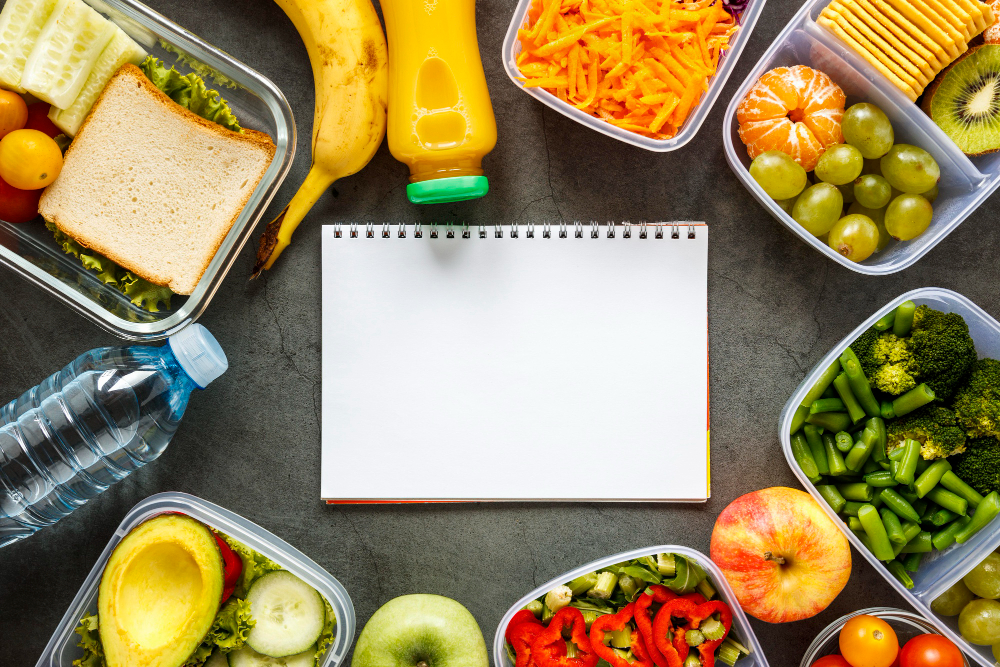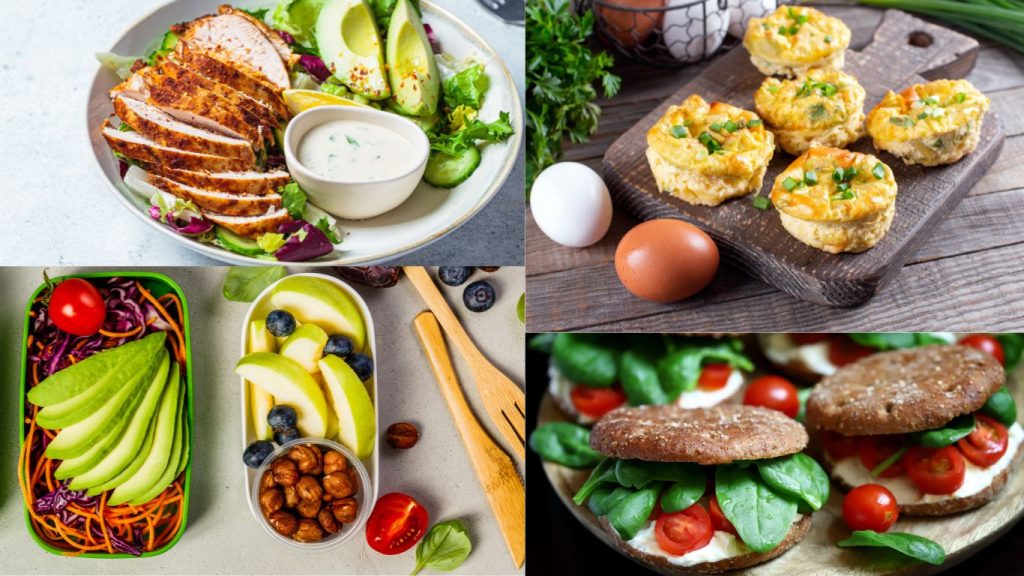In today’s fast-paced world, maintaining a healthy diet can often feel like an uphill battle. However, by incorporating the right staple foods into your weekly meal planning, you can make healthy eating easy and convenient.
In this comprehensive guide, we’ll explore a variety of nutrient-rich staple foods that will not only nourish your body but also simplify your weekly meal preparation.
What is Staple Foods?
A staple food is a food that is consumed frequently and in large quantities, making up a significant portion of a standard diet for an individual or population group. These staples provide energy needs and contribute to the intake of other nutrients. For humans, staple foods may be consumed daily or every meal, with most people consuming a small variety of staple foods. These staples are typically inexpensive or readily available foods that provide macronutrients and micronutrients needed for survival and health, such as carbohydrates, proteins, fats, minerals, and vitamins.
Examples include grains, seeds, nuts, and root vegetables. Cereals, legumes, and tubers account for about 90% of the world’s food calorie intake. Early agricultural civilizations valued crop foods as staples because they were suitable for storage over long periods without decay. These nonperishable foods are the only staples during seasons of shortage, such as dry seasons or cold temperate winters, and during seasons of surplus, wider food choices may be available.

Weekly Meal Table
| Day | Breakfast | Lunch | Dinner | Snacks |
|---|---|---|---|---|
| Monday | Oatmeal with berries | Grilled chicken salad | Quinoa stir-fry | Greek yogurt with nuts |
| Tuesday | Avocado toast | Lentil soup | Baked salmon with veggies | Apple slices with almond butter |
| Wednesday | Greek yogurt with granola | Turkey wrap | Vegetable curry | Carrot sticks with hummus |
| Thursday | Smoothie bowl | Chickpea salad | Stir-fried tofu with rice | Mixed nuts and dried fruits |
| Friday | Whole grain pancakes | Quinoa salad | Grilled shrimp tacos | Cottage cheese with fruit |
| Saturday | Scrambled eggs with spinach | Vegetable stir-fry | Baked chicken with quinoa | Rice cakes with avocado |
| Sunday | Breakfast burrito | Quinoa and black bean bowl | Grilled steak with sweet potato | Popcorn with nutritional yeast |
Whole Grains
Whole grains are an essential component of a balanced diet, providing a rich source of fiber, vitamins, and minerals. Incorporating whole grains into your meals can help stabilize blood sugar levels, promote digestive health, and reduce the risk of chronic diseases such as heart disease and type 2 diabetes. Some excellent options to consider include:
- Brown rice
- Quinoa
- Oats
- Whole wheat pasta
- Barley
Lean Proteins
Protein is crucial for maintaining muscle mass, supporting tissue repair, and keeping you feeling full and satisfied throughout the day. Opting for lean sources of protein can help reduce your intake of saturated fat and cholesterol while providing essential amino acids for optimal health. Here are some lean protein options to include in your meal rotation:
- Skinless poultry (such as chicken and turkey)
- Fish (such as salmon, tuna, and trout)
- Lean cuts of beef or pork
- Tofu and tempeh for plant-based protein alternatives
Fresh Fruits and Vegetables
Fruits and vegetables are packed with vitamins, minerals, antioxidants, and fiber, making them essential for maintaining overall health and well-being. Aim to include a colorful variety of fruits and vegetables in your meals to ensure you’re getting a wide range of nutrients. Here are some options to consider:
- Leafy greens (such as spinach, kale, and Swiss chard)
- Cruciferous vegetables (such as broccoli, cauliflower, and Brussels sprouts)
- Berries (such as blueberries, strawberries, and raspberries)
- Citrus fruits (such as oranges, grapefruits, and lemons)
- Sweet potatoes
- Avocados
Healthy Fats: Essential for Brain Health and Hormone Production
Including sources of healthy fats in your diet is vital for supporting brain function, hormone production, and overall cellular health. While it’s important to consume fats in moderation, opting for healthy sources can provide numerous health benefits. Here are some examples of healthy fats to incorporate into your meals:
- Olive oil
- Avocado oil
- Nuts and seeds (such as almonds, walnuts, chia seeds, and flaxseeds)
- Fatty fish (such as salmon, mackerel, and sardines)
Dairy and Dairy Alternatives:
Calcium is essential for maintaining strong bones and teeth, and dairy products are one of the best sources of this vital mineral. However, if you’re lactose intolerant or following a plant-based diet, there are plenty of dairy alternatives available that can provide similar nutritional benefits. Consider incorporating the following options into your meal plan:
- Low-fat or Greek yogurt
- Skim or almond milk
- Cheese (opt for reduced-fat varieties)
- Fortified plant-based milk alternatives (such as almond, soy, or oat milk)
Meal Planning Tips for Success
Now that you’re familiar with a variety of healthy staple foods to include in your weekly meal plan, here are some tips to help you stay on track and make the most of your healthy eating journey:
- Plan Ahead: Take some time each week to plan your meals and snacks, making sure to incorporate a balance of nutrients from all food groups.
- Batch Cooking: Prepare large batches of staple foods such as grains, proteins, and vegetables ahead of time to streamline meal preparation throughout the week.
- Portion Control: Pay attention to portion sizes to avoid overeating and ensure you’re consuming the right amount of calories for your individual needs.
- Stay Hydrated: Drink plenty of water throughout the day to stay hydrated and support optimal bodily functions.
- Listen to Your Body: Pay attention to hunger and fullness cues, and adjust your meal plan accordingly to meet your body’s needs.
By incorporating these healthy staple foods into your weekly meal planning and following these tips for success, you can simplify the process of eating well and nourish your body with the nutrients it needs to thrive.
Can I still enjoy my favorite foods while following a healthy meal plan?
Yes! Incorporating healthy staple foods into your diet doesn’t mean you have to give up your favorite foods entirely. It’s all about balance and moderation. You can still enjoy treats occasionally while prioritizing nutrient-rich foods most of the time.
How can I ensure I’m getting enough protein on a plant-based diet?
Plant-based sources of protein such as tofu, tempeh, legumes, and quinoa can provide ample protein to support muscle growth and repair. Including a variety of plant-based protein sources in your meals can help ensure you’re meeting your protein needs.
Is it necessary to follow a strict meal plan to eat healthily?
While having a meal plan can help stay organized and ensure you’re getting a balanced intake of nutrients, it’s not necessary to follow a strict plan. The key is to listen to your body’s hunger and fullness cues and make choices that align with your health and wellness goals.
Key Takeaway
Incorporating nutrient-rich staple foods into your weekly meal planning can simplify the process of eating well and nourish your body with essential vitamins, minerals, and macronutrients. By prioritizing whole grains, lean proteins, fresh fruits and vegetables, healthy fats, and dairy or dairy alternatives, you can support optimal health and well-being while enjoying delicious and satisfying meals throughout the week.
In conclusion, by prioritizing nutrient-rich staple foods and implementing effective meal planning strategies, you can make healthy eating easy and sustainable for the long term. Start incorporating these foods into your meals today and reap the benefits of a balanced and nourishing diet.








Your point of view caught my eye and was very interesting. Thanks. I have a question for you.
Can you be more specific about the content of your article? After reading it, I still have some doubts. Hope you can help me.
I don’t think the title of your article matches the content lol. Just kidding, mainly because I had some doubts after reading the article.
Your article helped me a lot, is there any more related content? Thanks!
Can you be more specific about the content of your article? After reading it, I still have some doubts. Hope you can help me.
fl7a3p